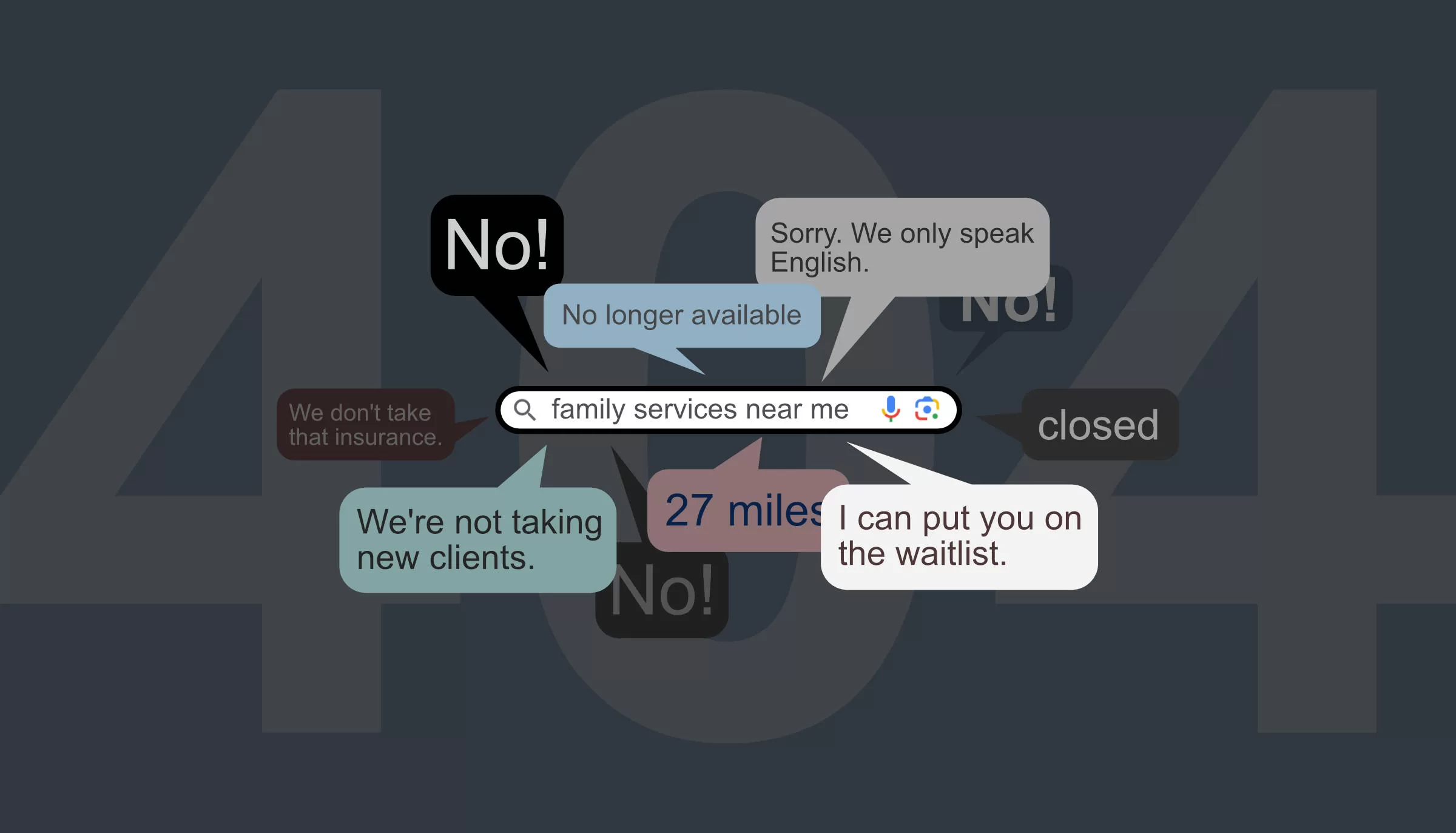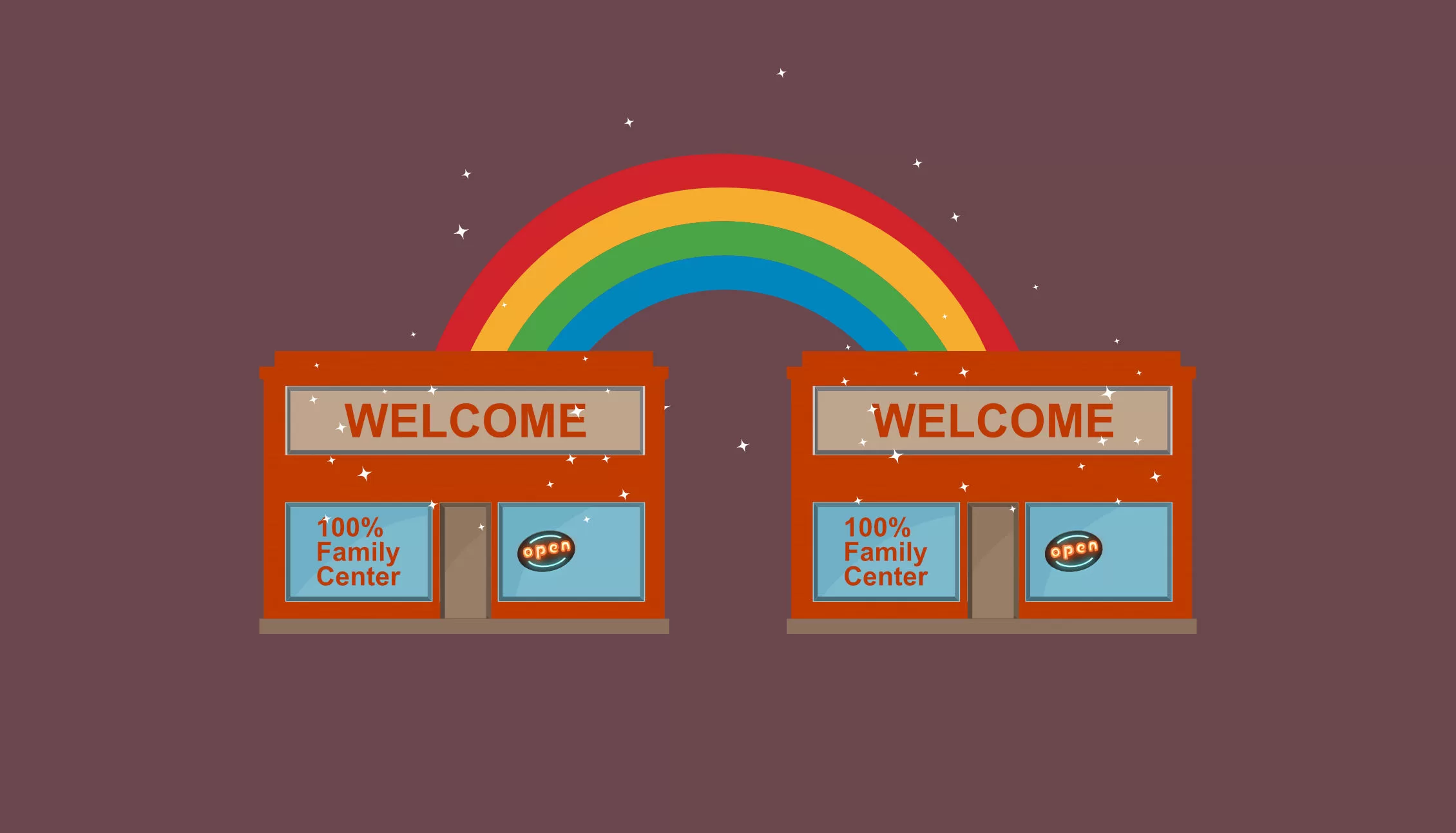How Do Families Find Vital Services for Surviving and Thriving?
How to 100% Training Series: Part 5
Finding affordable local services is still challenging while we swim in a sea of information. A fact-checked and constantly updated Family Service Directory can change that.
Katherine Ortega Courtney, PhD and Dominic Cappello
When we hear organizations say, “We refer families to services,” we always ask, “How do you know which local services actually exist and are accessible?” This reality is why a service directory is so important for each county initiative. The directory serves two purposes. First, it lets each of the local 100% New Mexico initiative’s ten action teams know which services in their sectors are accessible. Second, it guides residents to vital services that have been fact-checked and reviewed. The ten vital services we guide families to in a directory are described in 100% Community: Ensuring 10 vital services for surviving and thriving.
Step by step, innovation arises
Creating an accurate and up-to-date online service directory for family services organizations within a county involves careful planning, research, and ongoing maintenance. Here’s a step-by-step guide to help you develop such a directory:
Define Scope and Goals: Clearly outline the scope of your directory. Determine the types of family services you want to include (e.g., the ten vital services for surviving and thriving that include mental healthcare, medical care, food security programs, housing security programs, transportation, parent supports, early childhood learning programs, community schools, mentor programs, and job training described in the book 100% Community), and set specific goals for the directory, such as providing accurate information and promoting access to services.
Research and Compile Data: Gather information about family services organizations in the county. Reach out to local government agencies, nonprofit organizations, schools, health councils, community centers, and other reliable sources. Collect details such as organization names, contact information, services offered, hours of operation, languages spoken by the staff, help with transportation, and any eligibility criteria. For the 100% New Mexico initiative, it is key to identify costs and if a sliding fee scale is available. We seek to post organizations that offer services where cost is not a barrier. Some counties have a navigator program, including staff and software, that is funded to compile data.
Verify and Fact-Check: This is the most important part of a directory process. It must be fact-checked. Ensure the information you collect is accurate. Verify details by contacting the organizations directly or cross-referencing information with official websites, government databases, and reputable sources. Regularly update the directory to reflect changes and new additions. This requires identifying a local person who is paid to do this, finding a volunteer, identifying an employee of a government, or nongovernmental organization who can update the directory as part of his or her job.
Choose a Platform: Select a suitable platform to host your online directory. You can use website builders (e.g., WordPress, Wix), packaged directory solutions, or custom development to create a user-friendly and organized directory. The 100% Family Services Directory has a platform chosen for its user-friendliness.
Organize and Categorize: Divide the directory into categories based on the types of family services offered. Create subcategories if necessary to make navigating and finding relevant information easier for users. Our 100% Family Services Directory focuses on our ten vital services for surviving and thriving. Our local initiative’s ten action teams are focused on these areas.
Design and User Interface: Design the directory with a clean and user-friendly interface. Prioritize readability, clear navigation, and a search function that enables users to find services quickly. Make sure the directory is mobile-responsive.
Data Entry and Formatting: Enter the collected information about a potential service organization into the directory’s database. Format the content consistently to ensure a uniform and professional appearance. Include relevant details like addresses, phone numbers, descriptions, costs, hours, languages staff speak, and support with transportation to and from the organization, and website links.
Incorporate User Feedback: Provide a way for users to provide feedback about the information’s accuracy and the directory’s usability. This can help you continuously improve the quality of the directory. Our 100% Family Services Directory allows users to rate a number of qualities about the organization’s user-friendliness.
Regular Updates: Ensure that a team member or group is committed to regularly updating the directory with new information and changes to existing listings. Set up a schedule for routine checks to ensure accuracy. We can’t stress this enough, it’s vital for the local initiative to secure the services of someone who will update the directory on a quarterly basis. The initiative’s action teams can help with this.
Promote the Directory: Spread the word about the directory through local community channels, social media, community organizations, schools, providers in ten service sectors, and local government websites. Highlight its usefulness and value to residents of all ages seeking family services.
Collaboration with Organizations: Engage directly with family services organizations to encourage their participation in updating their information. Establish a system where they can notify the designated “directory person” within the initiative of changes or updates.
Legal and Privacy Considerations: Display a clear privacy statement and terms of use for the directory users. Also, make clear within the listings information about providers (such as youth mentors) having background checks (as they do with Big Brothers/Big Sisters) or if providers have particular certifications.
User Education and Support: Provide instructions on how to use the directory effectively. Offer user support and contact information in case users have questions or encounter issues.
Evaluate Impact: Regularly assess the impact of the directory on users’ access to family services. Measure website traffic and user engagement. Also, gather qualitative feedback to determine the directory’s effectiveness with residents and providers who use the directory to make referrals.
Remember that maintaining an online service directory requires ongoing effort to ensure its usefulness and accuracy. By providing a reliable resource, you can help families access essential services more easily and contribute to the well-being of the community. Please consider the above steps as a serving suggestion rather than a strictly designed set of rules. Activities work best when customized by local stakeholders to meet local needs. Please contact the Anna, Age Eight Institute with any questions, concerns, or bold ideas for improving the process. For a view of the entire initiative’s progress please visit our Research Briefs.
Survey developers can reflect on these questions.
- What support would your initiative require to identify service organizations in each of the ten sectors (serving the county)?
- Who (ideally a team) in the initiative’s action teams would be willing to review and update the descriptions of the service organizations during the year?
- What support would you require to review all the service directories currently used in your county (both print and web-based versions)?
- How often have you heard, “We refer families to services?”
- How do all the family-serving organizations within a county, including schools and child welfare, collaborate in developing service directories?
Join the discussion with other initiative members
If you’d like to join in the conversation across New Mexico, you can go directly to the 100% New Mexico Training Center and explore the “How to 100%” course. There, you will find a course on all initiative activities and a general discussion area connecting you with other initiative champions across New Mexico. For a view of the entire initiative’s progress please visit our research briefs.
The How to 100% Article Series
Don’t miss a blog post! Get notified!
The 100% New Mexico initiative is a program of the Anna, Age Eight Institute at New Mexico State University, College of Agricultural, Consumer and Environmental Sciences, Cooperative Extension Service. Contact: annaageeight@nmsu.edu or visit annaageeight.nmsu.edu to learn more.











